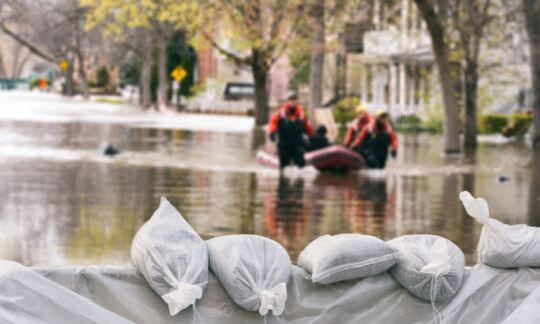Natural disasters in Australia: What does the most damage?
Australia has a long history of natural disasters. Here are some Australia has faced in recent times.

Australia has a long history of natural disasters. Here are some Australia has faced in recent times.
Key points:
- The annual cost of natural disasters in Australia is predicted to reach $39 billion by 2050.
- It is feared that general insurance may become unaffordable in disaster-prone areas of the country.
- APRA has suggested significant investment in disaster mitigation to help combat this.
After the extreme bushfire season of 2019-2020, the Australian government delivered on all Commonwealth-led recommendations from the Royal Commission into National Disaster Arrangements. While this is helpful for some, natural disasters are still an unfortunate reality for many Australians.
Natural disasters will also become more complex, unpredictable and difficult to manage; with the most recent findings handed down by the Bushfire Royal Commission report signalling extreme weather as already becoming more frequent and intense because of climate change.
Australia has a long history of natural disasters, including bushfires, floods, earthquakes, storms, cyclones and landslides. They have been particularly damaging in recent years, both in terms of loss of life and economic impact. With natural disasters expected to increase in the future, one consequence could be that insurance becomes unaffordable for some Australians.
We take a look at some of the types of natural disasters we have faced in recent times and how they are predicted to change in the future.
Heatwaves
Heatwaves are the deadliest natural disaster in Australia. The Bureau of Meteorology (BOM) defines a heatwave as three or more days in a row of unusually high day and night-time temperatures in an area. Heatwaves account for more deaths than any other natural disaster, according to natural hazards research centre Risk Frontiers. Approximately 4,555 Australians died from extreme heat from 1900 to 2011. In 2009, the heatwave that preceded the Black Saturday fires took the lives of 374 people in Victoria.
Australia’s climate has warmed to over 1.4 degrees Celsius since 1910, and further warming is inevitable over the next 20 years. This warming has led to the increased intensity, frequency and duration of heatwaves across Australia. The BOM projects that Australia will face hot days, warm spells and heatwaves that will occur more often and with increased intensity in the years to come.
Floods
The early 2022 floods in South East Queensland and Northern New South Wales were some of the most devastating in the nation’s history. Both regions recorded their wettest weeks since 1900. The Northern New South Wales regional city of Lismore, was one of the areas most affected, with flood levels reaching a height of 13.5 metres.
Extreme rainfall is also projected to increase in intensity in the future. According to the BOM, this may result in an increase in flood risks. Rising sea levels also mean that there will be increased flooding of low lying coastal and tidal areas. If you live in such an area or are concerned with potential flooding, it could be worth looking into flood insurance.
Cyclones
Cyclone Ilsa was one of the most intense tropical cyclones to occur in Australia in the last few decades. In April 2023, the category 5 cyclone had a peak mean wind intensity of 230km/h before decreasing to category 3 when making landfall. Damage to the Pilbara coast of Western Australia was limited due to the sparse nature of the region’s populace, but severe damage still occurred to infrastructure. Ilsa had a destructive impact on bird colonies on Bedout Island and two Indonesian fishing boats off Rowley Shoals, which took the lives of nine fishermen.
Australia’s 2022 State of the Climate Report, released by the BOM and the CSIRO, announced that there has been a decrease in the number of tropical cyclones in Australia since 1982. While tropical cyclones are projected to continue decreasing in number, they are expected to increase in intensity. According to the CSIRO, coastal impacts from tropical cyclones are also expected to become worse due to rising sea levels and increases in cyclone-related extreme rain and wind events. Due to this increase in cyclone activity, it could be worth looking into what your home insurance covers when it comes to hail and storm damage.
Bushfires
The 2019-2020 “Black Summer” bushfires were unprecedented in terms of scale and damage, with the direct loss of 33 lives and over 3,000 homes. It also affected 24 million hectares of land and nearly three billion animals. Over 400 deaths were also attributed to the after effects from toxic smoke. The financial impact of the fires is estimated to be over $10 billion.
Bushfire weather conditions are expected to increase in frequency and severity in future years, according to the BOM. So far in 2024 Australia has already witnessed extreme conditions in the southern and eastern parts of the country. If you’re concerned about bushfires and their potential effects on your home, it could be worth looking into fire insurance.
Earthquakes
There are about 100 earthquakes (with a magnitude of three or more) that happen in Australia each year, according to Geoscience Australia. One of the most destructive earthquakes in Australia’s history was the 1989 Newcastle earthquake. The earthquake, which measured 5.6 on the Richter scale, had an epicentre about 15 kilometres south-west of the CBD. It caused 13 deaths, affected 300,000 people and damaged 50,000 buildings. The Insurance Council of Australia put the damage bill at over $4 billion, adjusted for inflation.
Earthquakes are geological-driven, rather than weather-driven (like bushfires, floods and cyclones), natural hazards. Geoscience Australia has forecast that over a 50-year period, about 10% of Australia is likely to experience earthquakes that exceed the expected peak intensity for the location, although the magnitude may still be low.
How much do natural disasters cost?
Research from the Australian Business Roundtable has predicted that the total economic cost of natural disasters in Australia will reach $39 billion each year by 2050. To reduce said cost, the Australian Prudential Regulation Authority (APRA) suggests that about $3.5 billion will need to be invested into natural disaster mitigation and resilience each year.
One of the flow-on effects of natural disasters becoming more frequent and intense is that general insurance (including home insurance) may become unaffordable or unavailable in parts of the country. This concern was recently highlighted by APRA, who noted that without insurance it would take communities longer to recover from natural disasters.
This is already an issue in northern Australia. Since 2007, the average building insurance premiums have risen there by more than 178% and the average combined home and contents insurance premiums by 122%. According to Canstar’s data, in Northern Queensland the average home and contents insurance policy is $6,427 (based on sum insured values of between $200,000 and $1,800,000 for home cover and $50,000 for contents). This is over three times the cost of policies in Western Australia and Victoria. APRA says the increase in premiums has been driven by storms and cyclones, which are particularly common in the tropical parts of Australia. With this in mind, there are steps you can take to help prepare for a natural disaster, which could help reduce damage to your home and property.
 24/7 claims
24/7 claims
 Online discount
Online discount
 New for old
New for old
 24/7 claims
24/7 claims
 New for old
New for old
 24/7 claims
24/7 claims
 Online discount
Online discount
 New for old
New for old
 24/7 claims
24/7 claims
 New for old
New for old
 24/7 claims
24/7 claims
 Online discount
Online discount
 New for old
New for old
Canstar may earn a fee for referrals from its website tables, and from Sponsorship or Promotion of certain products. Fees payable by product providers for referrals and Sponsorship or Promotion may vary between providers, website position, and revenue model. Sponsorship or Promotion fees may be higher than referral fees. Sponsored or Promotion products are clearly disclosed as such on website pages. They may appear in a number of areas of the website such as in comparison tables, on hub pages and in articles. Sponsored or Promotion products may be displayed in a fixed position in a table, regardless of the product’s rating, price or other attributes. The table position of a Sponsored or Promoted product does not indicate any ranking or rating by Canstar. For more information please see How We Get Paid.
Cover image source: Marc Bruxelle/Shutterstock.com
This article was reviewed by our Content Editor Alasdair Duncan before it was updated, as part of our fact-checking process.

 24/7 claims
24/7 claims
 Online discount
Online discount
 New for old
New for old
Try our Home Insurance comparison tool to instantly compare Canstar expert rated options.
- What financial assistance is available for people affected by the devastating Queensland and NSW floods?
- Fire insurance cover for bushfires & house fires
- Home insurance policies with hail and storm damage cover
- Flood Insurance: Flood Cover for Home Insurance
- Home building insurance
- Accidental damage home insurance






